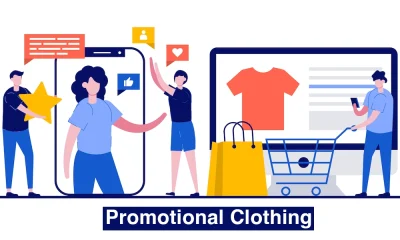Marketing
A powerful online strategy in just 3 simple steps
The CEO wants results. There’s a board meeting on Thursday and you’re expected to outline the new digital strategy for the business. That would be fine, except you’ve only been in the role for 2 weeks and, despite your years of experience in marketing, you know nothing about code and you’ve never written a digital strategy before. Time to start googling for ‘how to’ guides, am I right?

The CEO wants results. There’s a board meeting on Thursday and you’re expected to outline the new digital strategy for the business. That would be fine, except you’ve only been in the role for 2 weeks and, despite your years of experience in marketing, you know nothing about code, and you’ve never written a digital strategy before. Time to start googling for ‘how to’ guides, am I right?
Don’t panic.
The good news is that digital strategy can be easily understood without a degree in computer science. You don’t need to understand every line of code. You don’t need to be a social media guru. You don’t need to be a hipster. is required a clear understanding of the big picture and the ability to gather a team behind a common goal.
This article is going to show you how to prepare a powerful strategic snapshot for your business that has just three simple sections: Goals, Tactics, & Actions. When complete, it will be no more than 3 A4 pages long. It will be written in Plain English. Everyone on your team will have a stake in it, and even better – they will understand their role in making it happen.
Where to begin? At the end.
We start with the end in mind – the business goal. What is it that the business needs from this strategy, specifically? I mean, let’s talk numbers – sales figures, new client acquisitions, profit margins. It’s got to be measurable, and it needs to have a clear timeframe for success. There are all sorts of guides out there for how to prepare a SMART goal – and it’s important to get this right. Everything in the strategy follows from the goal. Your aim is to condense it into a single, succinct sentence. Everyone on the team, when asked, should be able to recall this goal without referring to detailed notes.
It’s become popular for many businesses to claim that they provide ‘smart solutions’. However, they’re seldom good at describing the problem they’re being asked to solve. By setting an apparent goal, you’re actually describing a problem (or a challenge) that your team is setting out to overcome. This makes finding a solution much, much easier.
Getting the tactics right
Page 2 of our strategic snapshot is about specific tactics: social media usage, website updates, design changes, online advertising and the like. To make this easier, we break it into chunks.
When we talk about digital strategy we’re usually concerned with 4 main areas:
- Brand strategy – what is the brand personality of the business? Warm and fuzzy, smart & savvy? It’s important that all of the activities you plan to align with the brand and support it. If the brand is poorly defined, then it’s time to engage with a Brand expert.
- Content strategy – The content of the strategy is so often overlooked and delegated down the chain to team members that are not equipped to implement it. Who will write your content? Who will manage the photography or produce the video? Is the material we’re creating both useful and relevant to our audience? These two factors have not only a direct impact on your audience, but indirectly how well you’ll perform in Search Engine results. Again, there are some great guides to preparing website content available online.
- Design strategy – looking cool is nice, but performance is better. Make sure the design improves the experience of your audience instead of hindering it. This means going beyond graphic design and looking at UX (user experience) Most SMEs don’t have this expertise in-house – so you’ll probably need to call in an expert.
- Technology strategy – What website platform is best? Well, in a way, that’s easy: it’s the one that serves your strategy the best. Technology is a tool, not an end in itself. Implement technology that brings you closer to your goal and ignore the rest. There are thousands of acronyms and buzzwords that can crowd out your goal and confuse you. Before purchasing any service, make sure the supplier is capable of explaining their technology in plain English.
From each of these strategic areas, you’ll identify the tactic to be used. Here’s one simple example:
- under ‘brand strategy’ you might wish to create loyalty among a fan community that uses your products.
- Under ‘content strategy’ you sketch out a plan to deliver useful, relevant video tutorials.
- The ‘design strategy’ sketches out what these look like and how people interact with them.
- The ‘technology strategy’ outlines how these will be delivered to the community – through social media, your website, mobile platforms etc.
We’re going to bullet point no more than 3 items under each main heading for our strategic snapshot. Yes, we may need to unpack some of them further down the line – but this snapshot is about the big picture – and getting people behind it. It’s not about every detail of implementation.
Taking action
So we have a goal, and we’ve outlined our overall approach. Now the rubber hits the road. Who is going to do it and when? The action stage of our strategy snapshot is all about assigning responsibility so we can get things done.
Create a table of activities, broken down into daily tasks, weekly tasks and monthly tasks. Describe each task. Identify the person responsible for making each task happen and when it will be completed by.
There are only two compulsory tasks for this schedule:
- Reporting: What data are we interested in? Who collects the data and reports back on it? How often do we do this report – weekly or monthly?
- Reviewing: A report is great, but how does it influence our behaviour in the next reporting period? Do we change our strategy? Do we update our list of tactics? Who gets to make that call?
This schedule should be succinct enough to fit on a single page. After all, if the goal is clear, the desired outcomes for the reporting and review will also be.
Get everyone on board
So back to that Board meeting you were worried about. The point of the 3-page strategy is that it is easy to get your head around in minutes. It’s small enough to pin to a communal noticeboard. It can be revised, discussed and updated easily, and the expectations of all parties to the strategy are clear. You’ll be presenting a strategy that includes clear KPIs and a reporting schedule – concrete information that Boards love – and none of it requires you to become a software engineer.
What’s more, your team will have confidence in the plan too – which is good because they’re the ones that will make it happen.






